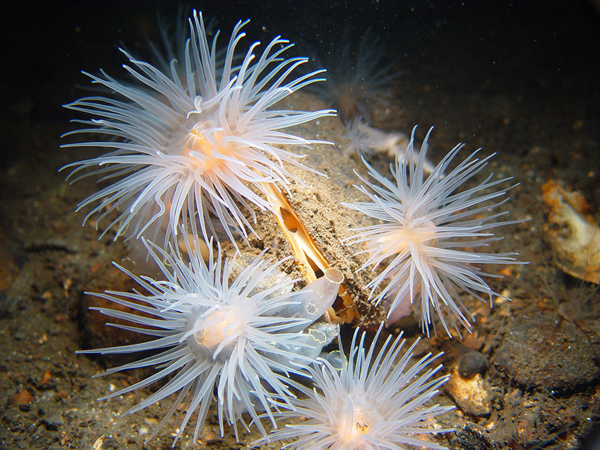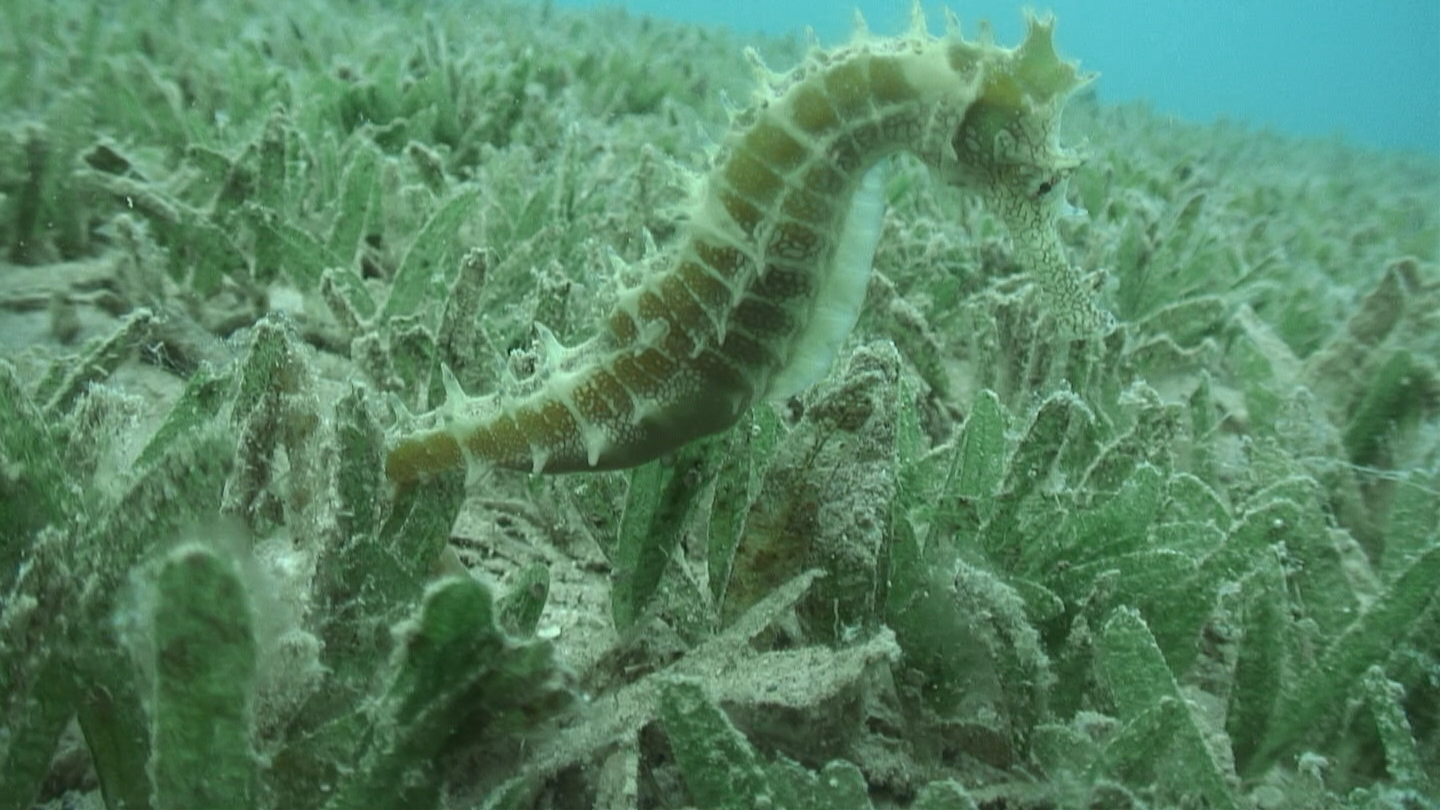Europe’s longest chalk reef – the Cromer Shoals in Norfolk – is among the 23 latest areas to gain protected status
A further 23 Marine Conservation Zones (MCZs) have been announced for English seas, bringing the total number of marine protection sites around the country’s coast to 50.
Among the newly created MCZs are The Needles site, which includes Colwell, Totland and Alum Bays; Cromer Shoal Chalk Beds – a reef which stretches 20 miles (30 km) off the Norfolk coast; Land’s End, one of the South-West’s most recognised areas and renowned for its rugged coastline; Farnes East – one of the deepest patches of the North Sea, reaching to between 30-100 metres in depth; Greater Haig Fras – the only substantial area of rocky reef in the Celtic Sea and Mounts Bay covering St Michael’s Mount and the Marazion area – home to important species such as seagrass, stalked jellyfish and crayfish.
The consultation, which took place in early 2015 and gathered more than 9,000 responses, has seen all 23 proposed MCZ sites in English waters being considered suitable for designation.
The new sites protect 4,155 square miles of rich marine habitats and bring the total number of MCZs in waters around England to 50, covering 7,886 square miles.
Success for recreational boating
Designation does not necessarily mean that recreational activities will be restricted and decisions will be made on a case-by-case basis.
The Government has indicated that some level of management of anchoring activity is likely within the Utopia MCZ, however the Royal Yachting Association (RYA) said only a small amount of anchoring currently takes place and the Government has outlined that management may only be monitoring to detect if this changes.
The RYA has submitted detailed information on recreational boating and anchoring at the Needles site, indicating that overlap of the seagrass with the main anchoring and mooring activity in the area is minimal. As a result, the Government has confirmed that any management required in this site may also be minimal and can potentially be done on a voluntary basis.
For the Swale Estuary, the Government has confirmed that no management of the anchoring, at its current level of intensity, would be required. Similarly, recreational boating activities at Mounts Bay are not expected to be affected by designation.
Emma Barton, RYA planning and environmental manager, said: ‘We will continue to support the designation process whilst striving to minimise the potential impact of MCZs on the navigational rights and safety of recreational boaters as plans for management of these sites are developed.’
Creating ‘a Blue Belt’
Marine Environment Minister George Eustice said: ‘By designating these new Marine Conservation Zones and creating a Blue Belt of protected areas around the country, we can better protect our environment through careful marine management in years to come.’
The Wildlife Trusts welcomed the announcement as did The Marine Conservation Society (MCS), saying it was ‘an encouraging step’ towards network of protection, although still some way off the original number of 127 proposed by the Government’s scientific advisors, sea users and conservation groups five years ago.
A third and final MCZ tranche will be put out to wider public consultation in 2017, and designated in 2018.
Melissa Moore, MCS head of policy, said: ‘We’re recommending that the final tranche in 2017 includes South Celtic Deep – a site that supports short-beaked common dolphin -Norris to Ryde, which is rich in seagrass meadows, Mud Hole off the north west coast – 35 metres deep and home to rare sea pens – and Compass Rose off the Yorkshire coast, which is an important spawning and nursery ground for herring and lemon sole.
‘Once the full network is finally designated in 2018, we look forward to English seas beginning to recover from decades of damage.’
Mike Simons, of the Boat Owners Response Group (BORG), said: ‘All 23 which went to public consultation as Tranche 2 are being designated. The most relevant to boating is The Needles site, which has Colwell, Totland and Alum Bays in it, all places recreational craft visit and anchor in. Several of the others are well offshore and would not impact recreational boating.’
 The 23 new Marine Conservation Zones are:
The 23 new Marine Conservation Zones are:
North Sea
- Fulmar
- Farnes East
- Coquet to St Mary’s
- Runswick Bay
- Holderness Inshore
- Cromer Shoal Chalk Beds
South East
- The Swale Estuary
- Dover to Deal
- Dover to Folkestone
- Offshore Brighton
- Offshore Overfalls
- Utopia
- The Needles
South West
- Western Channel
- Mounts Bay
- Runnel Stone
- Newquay and The Gannel
- Hartland Point to Tintagel
- Bideford to Foreland Point
- North-West of Jones Bank
- Greater Haig Fras
Irish Sea
- West of Walney
- Allonby Bay
Second tranche of Marine Conservation Zones announced
Defra announces the 37 English sites under consideration for inclusion in consultation
First Marine Conservation Zones in England announced
The 27 MCZs include Pagham Harbour, Blackwater, Crouch, Roach and Colne Estuaries, the Tamar Estuary and the Folkestone Pomerania
120 MPs unite in call for full network of Marine Protected Areas
Discussions surrounding a full network of Marine Protected Areas were held on the five year anniversary of the Marine &…
Marine Protected Areas doubled to tackle Scotland’s sealife declines
The new nature conservation MPA designation orders come into force on 7 August
New twist in Studland eelgrass debate
The Boat Owners Response Group (BORG) say part of the Studland eelgrass report is 'badly flawed'










